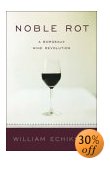

| Terroir-France Tell
a friend! Contact
us: French
Wine Poll Cheese-France: French Cheese Guide Cuisine-France:
French Cooking & Recipes This
material may not be published, rewritten, or redistributed |
![]()
Page 4 of the interview with
Jean-Philippe Delmas
Château Haut BrionHaut-Brion was the first Chateau of the area to work the wine with stainless tank. Under the direction of your father, Haut-Brion was famous for its innovation. Today how do you innovate? Do you have examples we can reveal here?
We test things. We will talk about it when we will be sure of the results. The bad thing about wine today is that you want to go fast and always faster. We prefer to be careful when something is changed. We test on a small part. We check how it evolves with the time. And if positive, then we apply the change to the whole production. So, yes, we keep on innovating, but in a reasoned way.
You are growing a few vines of Malbec, Sangiovese and even the typical burgundy grape Pinot Noir. What happened of these vines ? Have you produced and sold wine from these grapes?No, we did not put in the market any of these type of grapes. Our goal was to know how these type of grapes would behave as they are a little bit exotic in Bordeaux. In addition, we maintain an ampelographic (descriptive study of a grape variety) collection of different types of vine clones. We keep them at the request of the Chambre d'Agriculture office. The French State distributed the vines geographically in order to reduce the risk. We keep vines at Haut-Brion and if one day someone elsewhere in France needs them, he can find them easily. So we can say that a small part of our vineyards keeps the memory alive.
Can you give us some details on the wine making process at Haut-Brion?There is no special and unique recipe we have at Haut-Brion that others haven't. On the wine making part, it is more a philosophy. We like to work in relatively soft extraction in order to extract the best things out of the grape. We try to avoid any thermal shock, any mechanical intervention to keep the specificity of Haut-Brion.
I like to take the example of the tea maceration. The challenge is to extract enough, without any excess, with only tasting in mind. Such as the tea, if you infuses the grape skin during one hour, you will get a rosé. You will find it quite light for a red wine. If you leave it longer - and such as tea - you will get a darker and more astringent juice. So the challenge is to find the ideal infusion time. We spend a lot of time working on it. It is not easy. The ideal infusion time is written on the tea bag, but there is nothing written for wine. The duration can be 15, 20 or 30 days. It depends of the year.
How long would you recommend to keep a bottle of Haut-Brion?We have to distinguish between the vintage types:
For a difficult vintage, the wine is ready sooner than others. I take for example the 1997 vintage. Today it is ready to drink. For a difficult vintage, the wine is good after 5 years in the cellar. I would not advise to keep it longer as the wine will not improve.
For a good vintage, I suggest you to wait 10 years. They can improve a little bit.
For an exceptional vintage, well, there are not so many actually. They are good right from the first beginning and can age for a long time. They are almost perfect.
Yesterday, I tasted a 1982 vintage, and I don't taste one everyday, I had the feeling that I tasted it at the right time. 10 years ago I had the same feeling. It is always the right time with this kind of wine. You can keep them as long as you wish.Read more
Jean Philippe Delmas, Château Haut-BrionGo back to the begining of the interview with Jean-Philippe Delmas, Chateau Haut-Brion
Château Haut-Brion
Chateau Haut-Brion
Chateau Haut-Brion
Noble Rot: A Bordeaux Wine Revolution
by William EchiksonWall Street Journal columnist
Explain how the Bordeaux wine industry has changed over the years
Learn morePrice: $18.00 (save 30%)
french wine regions | grape varieties | winemaking | classification in France | tasting | wine and food | wine and health | legendary wines | french wine news | wine shop | french wine guide











